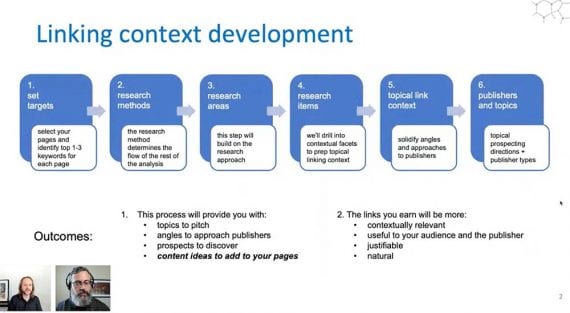
However, with NFTs and virtual goods gaining traction within the fashion and gaming industries, we could see a new type of AR wearable emerge – one that is designed for the ‘metaverse’ and the everyday consumer who interacts in it. Interestingly, Mark Zuckerberg himself has commented on how Facebook plans to become a metaverse company in future. (Metaverse is typically defined as a network of virtual environments where people can interact with the real, augmented, and physical world simultaneously). Zuckerberg commented on the rise of digital goods within this, stating that: “I think digital goods and creators are just going to be huge… in terms of people expressing themselves through their avatars, through digital clothing, through digital goods, the apps that they have, that they bring with them from place to place.”
We’re proud of what we’ve achieved with Ray-Ban Stories and what we integrated into the most iconic glasses design in the world. Together with EssilorLuxottica, we focused on the design and only after that added the technology we believed would be most useful to people. pic.twitter.com/rcmXhinDUj
Smart glasses with mainstream appeal
But will it take off, even amid privacy concerns? Here’s a look at some of the challenges that this technology poses, as well as what are other companies are doing in the space.
Speaking to Econsultancy about the release, co-founder of Threepipe, Jim Hawker, suggests that the partnership could have mainstream appeal. This is “mainly down to the collaboration and distribution with Ray-Ban,” says Hawker. “It’s a great partner to launch with, as it moves this away from being a tech-led innovation and into more of a lifestyle one, with a high street presence.”
Ray-Ban Stories is the first iteration of Facebook smart glasses, with the company stating that AR is the next step. Currently, most other AR glasses or wearables are pitched for use in specific contexts such as in the workplace. Take Lenovo’s ThinkReality A3, for example – released in January 2021 – which is described as a product that “enhances workers’ abilities to do more wherever they are” through “remote assistance, guided workflows, and 3D visualization.”
Learn more: https://t.co/hoMtuzrCu9 | #LenovoCES #CES2021 pic.twitter.com/0fmcpXfvXu
The Social Quarterly
Since the discontinuation of Google Glass back in 2015, the wearables market has focused on smartwatches and fitness trackers. In 2021, however, a new pair of smart glasses – created by Facebook in partnership with Ray-Ban – could usher in a new era of mainstream wearable technology.
Of course, Apple already leads the wearable market with its smartwatch – an item that has hit the sweet spot between valuable technology and mainstream fashion and lifestyle. Whether people want to wear Facebook on their eyes is perhaps a different story, but it could be a sign of what’s to come in the future as the concept of the ‘metaverse’ grows in mainstream culture.
Despite this, of course, it’s likely that consumers will take some convincing. The ‘baked in privacy’ that Facebook is referring to is the ability to switch off the camera and microphone, as well as an LED light that notifies others when you are recording. These features could easily be misused, of course, hence why Facebook has set-up a dedicated micro-site on Ray-Ban to educate consumers on how to keep themselves and others safe.
AR wearables for the metaverse
Versatile, portable, and comfortable. Introducing the Lenovo ThinkReality A3 — The most versatile smart glasses ever designed for the enterprise with #Snapdragon XR1.
A big obstacle for Facebook and any smart glasses manufacturer is of course privacy. Facebook recognises this, stating that – apart from the data needed to make the glasses work and function – the sharing of additional data is entirely opt-in. What’s more, Facebook recognises the consumer demand for privacy, which is “why we baked privacy directly into the product design and functionality of the full experience,” says the company.
Created in partnership with Ray-Ban’s manufacturer, EssilorLuxottica, Facebook’s new smart glasses (called Ray-Ban Stories) enable wearers to capture and share photos and videos, listen to music and podcasts, and make calls. As part of the launch, Facebook has also released a new app, Facebook Views, where the recorded content is stored. In a tweet, Facebook Reality Labs VP Andrew Bosworth describes Ray-Ban Stories as “a key milestone on the path to fully-featured AR glasses and will show people what it’s like to stay present in the moment.”
— Boz (@boztank) September 9, 2021
While similar to Snapchat Spectacles in functionality, the glasses are being pitched as more of a fashion item, with three Ray-Ban styles available as both prescription glasses and sunglasses: its iconic Wayfarer design, as well as round and meteor designs.
But will this be enough to drive adoption? According to Facebook, Ray-Ban Stories is designed to help people ‘live in the moment’, theoretically enabling users to interact with the technology without being glued to a smartphone. The ability to share and create content in this way could be a draw, particularly for ‘influencers’ or content creators. However, some suggest the notion of ‘being in the moment’ while doing so is something of a contradiction, with added technology further encroaching on our ability to enjoy reality. Writing for Forbes, John Brandon highlights the danger of the black void, i.e. “the empty voidless periods of time when we use “more” technology but experience less of actual, real-world living.”
Through the next generation of wearable AR glasses, digital clothing could become more of a mainstream trend, enabling consumers to buy and see experience digital fashion in a fully immersive way. A wearable from Apple is expected to be the next big release, with reports of an augmented reality headset and a more mainstream pair of AR glasses arriving next year.
Jim Hawker told Econsultancy that he believes privacy for Facebook “is the biggest issue it faces.” He continues: “A flashing light on the frames, telling people that the camera is on is hardly subtle – who wants to wear a flashing light on their head? As a parent, I certainly wouldn’t want these worn near my children, unless it was in the company of close friends and I cant see how this hurdle can be overcome. Unless we become more relaxed about privacy and I don’t see that happening any time soon.”
What about privacy concerns?
This is perhaps more of a long-term obstacle for smart glasses rather than an immediate concern for Facebook, however, the notion could put-off consumers from investing in the item – particularly as awareness of too much social media usage and screen time has increased since Covid.
As well as the fashion-led design, and the ability to record and share content, another differentiating factor from Snapchat Spectacles is that Ray-Ban Stories feature ‘in-built open ear speakers’ and a ‘three-microphone audio array’, so that wearers can control the glasses completely hands-free.
— Lenovo (@Lenovo) January 10, 2021
Indeed, we have already seen this with trends like virtual influencers, and the popularity of digital clothing in gaming (whereby gamers can buy outfits and ‘skins’ for in-game avatars). Meanwhile, the retail industry has embraced AR tools to enable users to ‘try on’ clothing, such as Snapchat’s recently released features.



